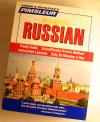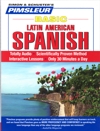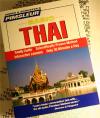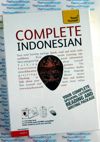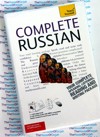| DK Eyewitness Travel Guide - Italian Phrase Book and Cd
"An Essential Reference for Every Traveller "
Brand New - Still in Original Packaging
Quick and easy to use and of a size suitable to fit in a pocket, this Italian phrase book is organized by subjects such as everyday phrases, hotels and travelling around. The book uses a simple system of imitated pronunciation and includes references to the Euro currency.
This easy-to-use, pocket-sized book is organised by everyday subjects so you can easily refer to all the essential words and phrases you will need for a trip to Italy.
The ample selection of useful words and phrases will meet the general needs of both tourist and business travellers and is supported by a 2,000-line mini dictionary.
Easy-to-use book for reference on the move 70-minute CD to practice your vocabulary and aid pronunciation.
Useful phrases for every situation, plus an extensive menu guide.
These pocket dictionaries give business and vacation travelers everything they need for a smooth, successful trip. Organized by subject, the traveler can quickly find the vocabulary relevant to the situation, whether transportation, hotels, meals, shopping, post offices and banks, sports, or health care, accompanied by a pronunciation guide. At the end of each phrase book is a 2,000-word mini-dictionary. Fully updated from the original editions to reflect currency changes such as the Euro and new vocabulary such as e-tickets.
About the Italian Language
Italian is a Romance language spoken by about 63 million people, primarily in Italy. In Switzerland, Italian is one of four official languages. It is also the official language of San Marino and Vatican City. Standard Italian, adopted by the state after the unification of Italy, is based on Tuscan dialect and is somewhat intermediate between Italo-Dalmatian languages of the South and Northern Italian dialects of the North.
Unlike most other Romance languages, Italian has retained the contrast between short and long consonants which existed in Latin. As in most Romance languages, stress is distinctive. Of the Romance languages, Italian is considered to be one of the closest resembling Latin in terms of vocabulary, though Romanian most closely preserves the noun declension system of Classical Latin, and Spanish the verb conjugation system , while Sardinian is the most conservative in terms of phonology.
In Italy, all Romance languages spoken as the vernacular in Italy, other than standard Italian and other unrelated, non-Italian languages, are termed "Italian dialects". Many Italian dialects are, in fact, historical languages in their own right. These include recognized language groups such as Friulian, Neapolitan, Sardinian, Sicilian, Venetian, and others, and regional variants of these languages such as Calabrian. Though the division between dialect and language has been used by scholars (such as by Francesco Bruni) to distinguish between the languages that made up the Italian koine, and those which had very little or no part in it, such as Albanian, Greek, German, Ladin, and Occitan, which are still spoken by minorities.
Dialects are generally not used for general mass communication and are usually limited to native speakers in informal contexts. In the past, speaking in dialect was often deprecated as a sign of poor education. Younger generations, especially those under 35 (though it may vary in different areas), speak almost exclusively standard Italian in all situations, usually with local accents and idioms. Regional differences can be recognized by various factors: the openness of vowels, the length of the consonants, and influence of the local dialect (for example, annà replaces andare in the area of Rome for the infinitive "to go").
Unlike most other Romance languages, Italian has retained the contrast between short and long consonants which existed in Latin. As in most Romance languages, stress is distinctive. Of the Romance languages, Italian is considered to be one of the closest resembling Latin in terms of vocabulary, though Romanian most closely preserves the noun declension system of Classical Latin, and Spanish the verb conjugation system , while Sardinian is the most conservative in terms of phonology.
Unlike most other Romance languages, Italian has retained the contrast between short and long consonants which existed in Latin. As in most Romance languages, stress is distinctive. Of the Romance languages, Italian is considered to be one of the closest to Latin in terms of vocabulary. Lexical similarity is 89% with French, 87% with Catalan, 85% with Sardinian, 82% with Spanish, 78% with Rhaeto-Romance, 77% with Romanian, and 52% with Maltese.
Italian is most closely related to the other two Italo-Dalmatian languages, Sicilian and the extinct Dalmatian. The three are part of the Italo-Western grouping of the Romance languages, which are a subgroup of the Italic branch of Indo-European. The total speakers of Italian as maternal language are between 60 and 70 million. The speakers who use Italian as second or cultural language are estimated around 110-120 million.
Italian is the official language of Italy and San Marino, and one of the official languages of Switzerland, spoken mainly in Ticino and Grigioni cantons, a region referred to as Italian Switzerland. It is also the second official language in some areas of Istria, in Slovenia and Croatia, where an Italian minority exists, just as in the Croatian city of Rijeka just outside Istria. It is the primary language of the Vatican City and is widely used and taught in Monaco and Malta. It is also widely understood in France with over one million speakers (especially in Corsica and the County of Nice, areas that historically spoke Italian dialects before annexation to France), and in Albania.
Italian is also spoken by some in former Italian colonies in Africa (Egypt, Libya, Somalia, Tunisia, Ethiopia, and Eritrea). However, its use has sharply dropped off since the colonial period. In Eritrea, Italian is widely understood . In fact, for fifty years, during the colonial period, Italian was the language of education, but as of 1997, there is only one Italian-language school remaining, with 470 pupils. The number of Italian speakers may increase a little when the number of students enrolling and studying in that remaining Italian-language school increases and Eritrea will be the only African nation where Italian is widely spoken and understood. In Somalia, Italian used to be a major language but due to the civil war and lack of education, only the older generation still uses it. In Egypt and Tunisia, it is mostly spoken by Italian Egyptians and Italian Tunisians and some professionals of non-Italian descent. In all of the mentioned former Italian African colonies, most of the fluent Italian speakers are the returnees of their respective countries who grew up in officially Italian-speaking nations, most especially Italy.
Italian and Italian dialects are widely used by Italian immigrants and many of their descendants (see Italians) living throughout Western Europe (especially France, Germany, Belgium, Switzerland, the United Kingdom and Luxembourg), the United States, Canada, Australia, and Latin America (especially Uruguay, Brazil, Argentina, and Venezuela).
In the United States, Italian speakers are most commonly found in four cities: Boston (7,000), Chicago (12,000), New York City (140,000), and Philadelphia (15,000). According to the United States Census in 2000, over 1 million Italian Americans spoke Italian at home, with the largest concentrations (nearly half) found in the states of New York (294,271) and New Jersey (116,365). In Canada, Italian is the fourth most commonly-spoken language with 661,000 speakers (or ~ 2.1% of the population) according to the 2006 Census. Particularly large Italian-speaking communities are found in Montreal (~ 179,000) and Toronto (~ 262,000). Italian is the second most commonly-spoken language in Australia, where 353,605 Italian Australians, or 1.9% of the population, reported speaking Italian at home in the 2001 Census. In 2001 there were 130,000 Italian speakers in Melbourne, and 90,000 in Sydney.
From the late 19th to the mid 20th century, thousands of Italians settled in Argentina, Uruguay and southern Brazil, where they formed a very strong physical and cultural presence (see the Italian diaspora).
In some cases, colonies were established where variants of Italian dialects were used, and some continue to use a derived dialect. An example is Rio Grande do Sul, Brazil, where Talian is used and in the town of Chipilo near Puebla, Mexico each continuing to use a derived form of Venetian dating back to the 19th century. Another example is Cocoliche, an Italian-Spanish pidgin once spoken in Argentina and especially in Buenos Aires, and Lunfardo.
Rioplatense Spanish, and particularly the speech of the city of Buenos Aires, has intonation patterns that resemble those of Italian dialects, due to the fact that Argentina had a constant, large influx of Italian settlers since the second half of the nineteenth century; initially primarily from Northern Italy then, since the beginning of the twentieth century, mostly from Southern Italy.
Starting in late medieval times, Italian language variants replaced Latin to become the primary commercial language for much of Europe and Mediterranean Sea (especially the Tuscan and Venetian variants). This became solidified during the Renaissance with the strength of Italian banking and the rise of humanism in the arts.
During the period of the Renaissance, Italy held artistic sway over the rest of Europe. All educated European gentlemen were expected to make the Grand Tour, visiting Italy to see its great historical monuments and works of art. It thus became expected that educated Europeans would learn at least some Italian; the English poet John Milton, for instance, wrote some of his early poetry in Italian. In England, Italian became the second most common modern language to be learned, after French (though the classical languages, Latin and Greek, came first). However, by the late eighteenth century, Italian tended to be replaced by German as the second modern language on the curriculum. Yet Italian loanwords continue to be used in most other European languages in matters of art and music.
Today, the Italian language continues to be used as a lingua franca in some environments. Within the Catholic church Italian is known by a large part of the ecclesiastic hierarchy, and is used in substitution of Latin in some official documents. The presence of Italian as the primary language in the Vatican City indicates not only use within the Holy See, but also throughout the world where an episcopal seat is present. It continues to be used in music and opera. Other examples where Italian is sometimes used as a means of communication is in some sports (sometimes in football and motorsports) and in the design and fashion industries.
|
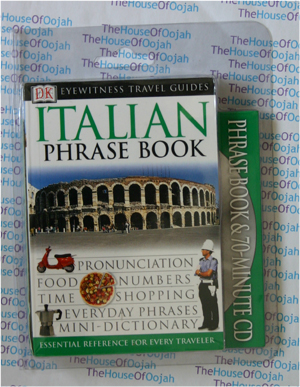


 0 Items (Empty)
0 Items (Empty)
